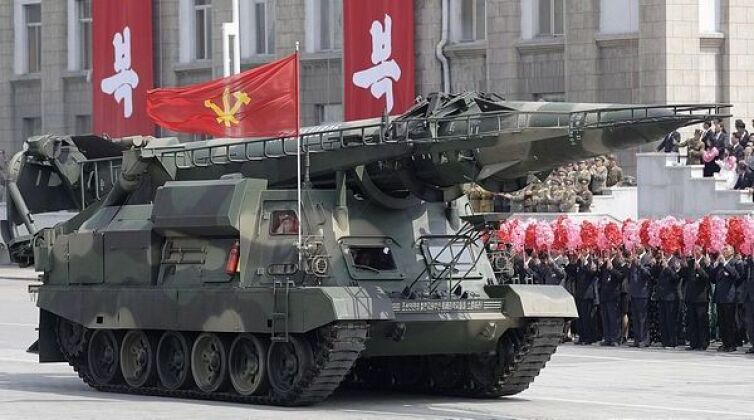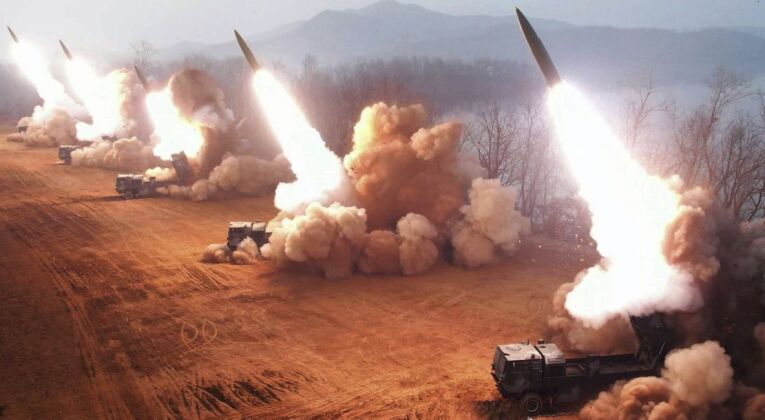News
Russia Used New North Korean KN-23B Ballistic Missiles For Strikes Across Ukraine: What Makes Them So Dangerous?
The Russian Military has begun using North Korean short range ballistic missiles in Ukraine, according to a January 4 statement by White House National Security Council spokesman John Kirby. “Information indicates that the Democratic People’s Republic of Korea recently provided Russia with ballistic missile launchers and several ballistic missiles,” he stated, elaborating: “On the 30th of December 2023, Russian forces launched at least one of these North Korean ballistic missiles into Ukraine. This missile appears to have landed in an open field in the Zaporizhzhia region [in southeastern Ukraine]… On January 2, Russia launched multiple North Korean ballistic missiles into Ukraine, including as part of this overnight aerial attack. We’re still assessing the impacts of these additional missiles.” The spokesman added that North Korea had or was expected to receive fighters, surface to air missiles, armoured vehicles and other material and technology transfers in return for major weapons deliveries.

North Korea retains one of the world’s largest and most diverse defence sectors, and although limited in areas such as combat aviation or surface warships its production capacity for ballistic missiles has proven to be very high – particularly for short ranged designs such as the KN-23 and KN-24 as evidenced by their testing rates. With an artillery force considerably larger than Russia’s own, the country also served as a major supplier of artillery to the Russian Army from the early stages of hostilities in Ukraine. Regarding the classes of missiles delivered to Russia, although the White House did not name any of the classes specifically Kirby stated that those in service had maximum ranges of around 550 miles – or 900 kilometres. This indicates that the missile class in question was either the Hwasong-9, the most advanced derivative of the Scud missile known with triple the range of the original, or much more likely the much more modern KN-23B. The Hwasong-9 entered service in the early-mid 2000s, and while not known to be fielded domestically in significant numbers it was exported to Syria in considerable quantities and represents the country’s primary strategic missile deterrent – and previously a key delivery vehicle for its chemical weapons to deter hostile neighbours Turkey and Israel.

The KN-23 is a much newer and more compact solid fuelled ballistic missile which is in many ways considered more capable than the Russian Iskander-M system. Like the Iskander the missiles fly on semi ballistic depressed trajectories with apogees of 50 km and with the ability to conduct extensive in flight manoeuvres throughout their flight paths. This was described by North Korean state media as an “irregular orbit” with “low-altitude gliding leap type flight mode,” and otherwise as a “peculiar mode of guiding flight.” This proved sufficient that one of the most capable Western anti-missile systems the AEGIS proved unable to even detect them – which was revealed after a test launch in October 2019. A larger variant with a longer range, the KN-23B, has an extended range of 900km compared to the original’s 700km. By contrast the Russian Iskander-M, although similarly difficult to intercept, can reach targets just 500km away – or 300km for export variants. The KN-23 was thus long speculated to be one of the most attractive asset types which Russia could seek to acquire from North Korea, alongside rounds for artillery, rocket artillery and 115mm rounds for T-62 tanks.

Unlike the very distinctive looking Hwasong-9, the KN-23B somewhat resembles the Iskander-M system albeit with a significantly larger size and could thus potentially much more easily have been delivered without conspicuously appearing on satellite or other images. Furthermore, while the Hwasong-9 is thought to have long since seen production ended, the KN-23B is still being produced on a massive scale in North Korea allowing deliveries to continue to supplement the supplies of Iskanders Russia is receiving domestically. Preceding the debut of what is very likely the KN-23B, Russia has already seen deliveries of 9K720 missiles for the Iskander-M surge to several times their pre-war rates, allowing the missile systems to be used in new ways against Ukrainian targets.
Beyond North Korea, the White House spokesman indicated that Russia could further seek to acquire Iranian missiles, observing: “According to press reporting in September of 2023, Iran’s Revolutionary Guard Corps, the IRGC, hosted Russian Defence Minister [Sergei] Shoigu in Iran and showcased … close-range ballistic missile and other missile systems. This event marked the first public display of ballistic missiles to a senior Russian official visiting Iran since February of 2022.” “More recently, in mid-December [2023], the IRGC Aerospace Force deployed multiple ballistic missile and missile support systems to a training area inside Iran for display to a visiting Russian delegation,” he aded. With Iran lacking a tactical missile class comparable to the Iskander-M or KN-23 it has long been speculated to be a potential client for either one of the two systems. What Iran may be able to provide, however, are much cheaper missiles such as the Fateh-110 which can be used against less vital or less well defended targets in bulk.












